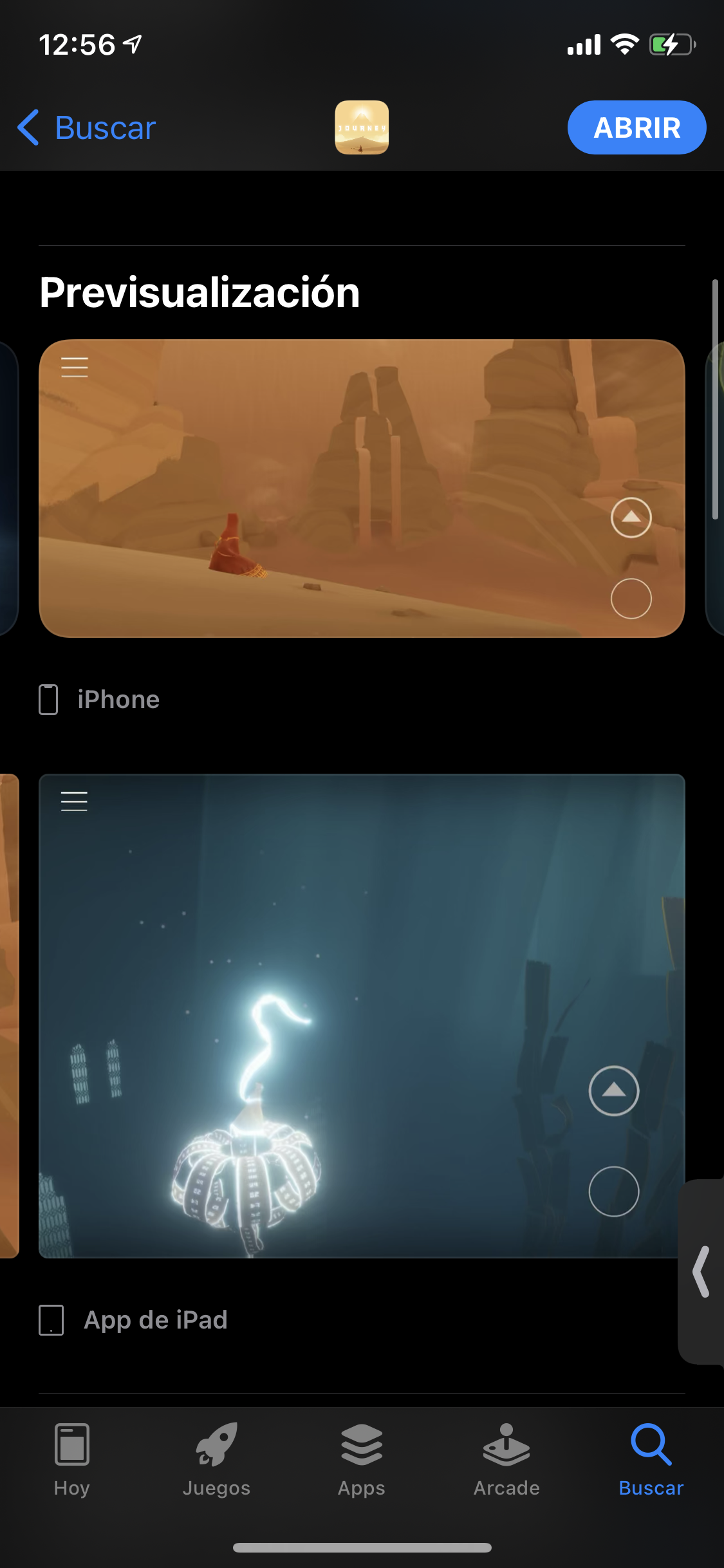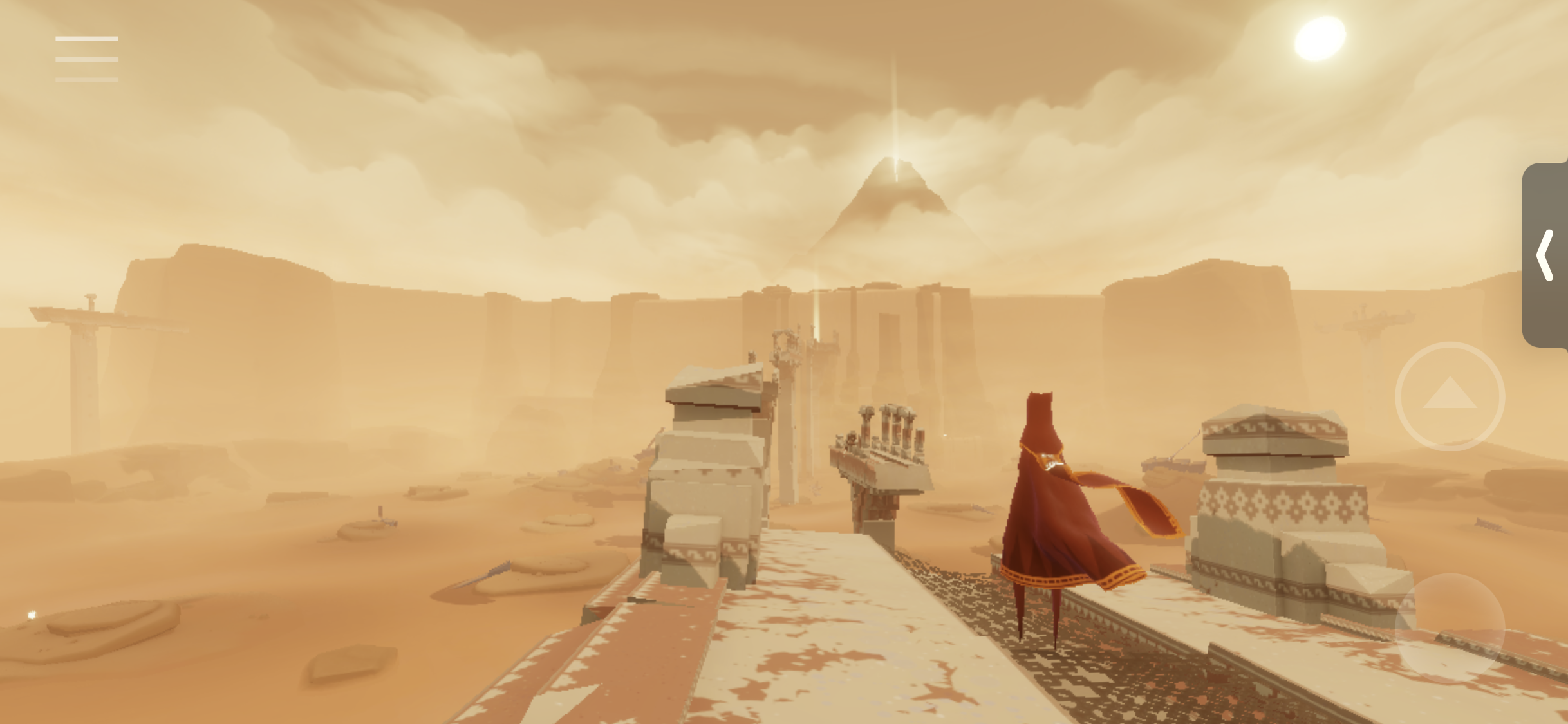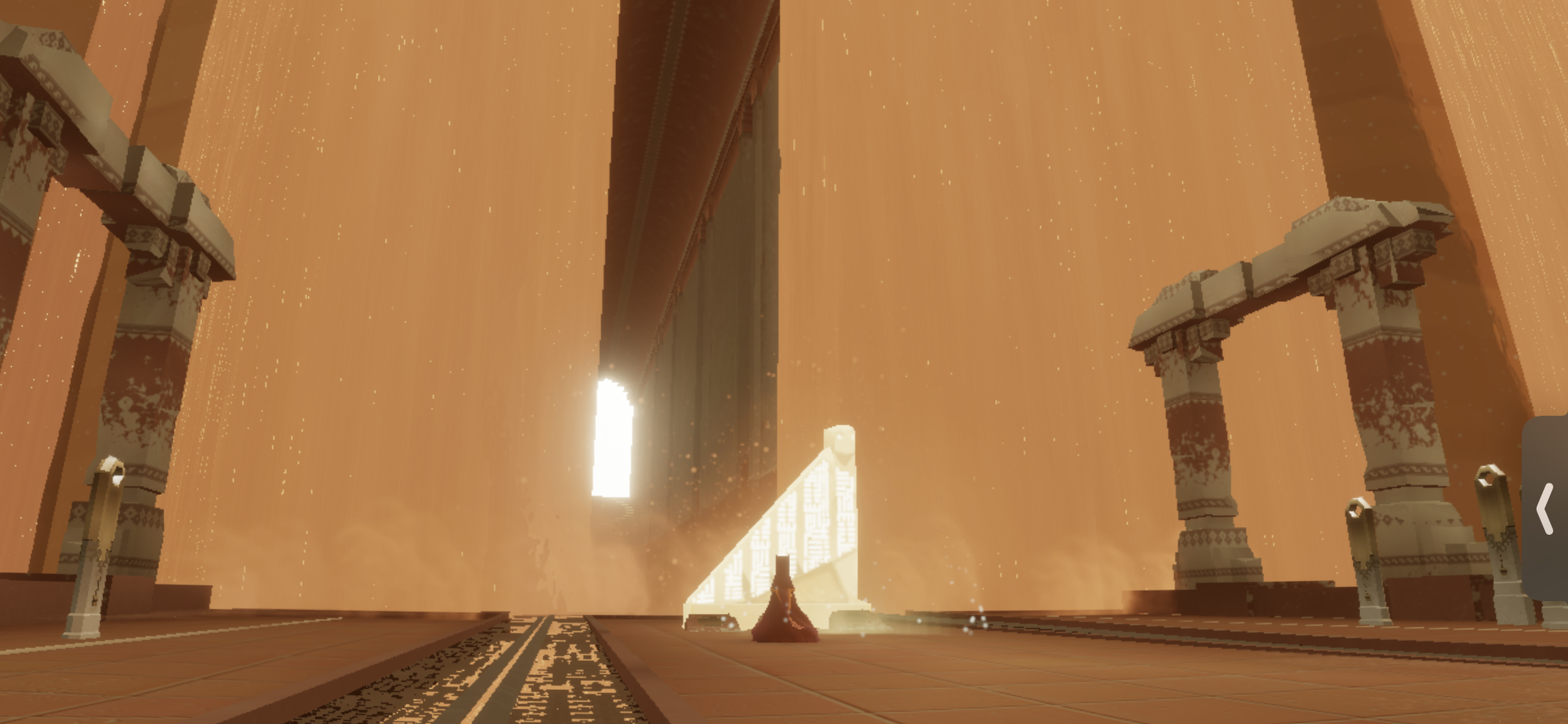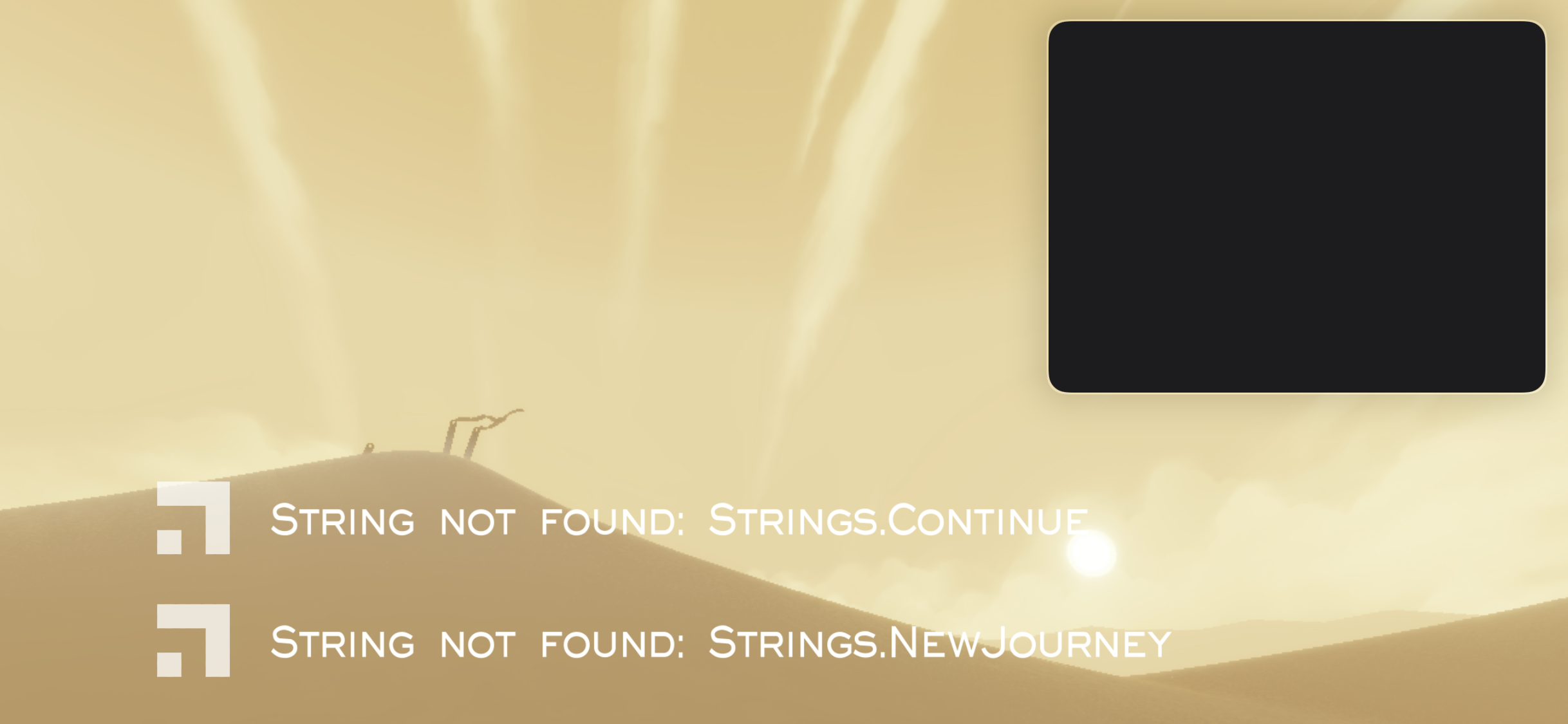
For this critical play, I played the game Journey, developed by Thatgamecompany and Santa Monica Studio. The game is targeted for a general audience, but particularly for gamers who enjoy open explorations and mystery. I would not recommend this game for children because the narrative is slightly hard to follow, which I will discuss further in the article. I chose this game based on the marketing materials presented in the App Store.


Even before purchasing, users are drawn in by the attractive graphics of the gameplay. The details presented in the pictures show how thoughtful and diligent the developers were in creating this virtual world for players. Furthermore, many walking games appear to only take place in a single place, like a house or a certain city. Although the majority of the pictures displayed are in the desert, there are several pictures that appear to be in a cave or mountain, truly emphasizing the idea of an open world and elaborate journey.
In this game, players take on the role of a robed character, interacting with cloth-like items that give the user the ability to fly about the desert and traverse through the wind. The goal, although not explicitly stated, is to reach the top of the mountain that can be seen in the distance.
Walking tells the story
One of the unique features of this game is that there are no words written or spoken. Players are thrown into a world with no context and must figure out the story for themselves. Of course, this process is simple because the checkpoints and interactive objects are salient. Players have the option to explore the desert in whatever form they want. There is no clear path they must take as there would be in a 2-D world. However, interactive objects are distinctly designed from the rest of the desert to guide and attract users. An example of this would be the waving pieces of cloth that stick out of the sand dunes. The formal element of objectives is also well highlighted in this game through beams of light that illuminate the sky. Pictured below, we can see a beam of light emerging from the top of the ruins and from the mountain, giving users enough context about their goals without some extensive dialogue. Users don’t know why they need to make it to the mountain, but they know they need to, inducing a sense of mystery and urge to explore. The highlighted objectives also give more structure to the narrative and prevent users from completely getting lost.
I find it interesting that the designers didn’t introduce formal elements such as time. There is no sense of urgency. There is also no desired outcome. The user does not gain anything, such as a ranking or a win, from completing the game. The only thing they gain is a story. I believe the lack of a time constraint and the lack of a major outcome truly emphasize the idea of exploration and enjoying the journey. The designers don’t want you to rush through the game because they want you to enjoy each level and the aesthetic of the world to the greatest extent.

At its heart, the game Journey establishes fun through discovery. Players uncover clues as to who their character is and the significance of the desert as they continue to play. At the end of each level, the players receive a little more information about the civilization that was once present in the desert, and potentially what led to its collapse. This information is presented through hieroglyphic-like sketches upon a mural. The fun of discovery is emphasized by the limited number of actions that players can take. They can walk around the desert, but the only ways they can interact are through jumping/flying or releasing a musical note that captivates floating pieces of cloth and empowers the player to fly for longer periods of time.
Unfortunately, I found myself with a lot of questions about the narrative as I was playing. Although I only played for about an hour and a half, I still found myself with hardly any understanding of who my character was and why they were trying to reach the top of the mountain. I find walking simulators to be a double-edged sword. Players may be enticed to continue playing in order to unravel the story further. Or they may be frustrated by the lack of context and prematurely deem that the narrative isn’t well developed. As I was playing, my mindset leaned towards the latter. I simply couldn’t wrap my head around who my player was, why they could fly, and why these pieces of cloth empowered the player.


Of course, I think that the lack of context was intentional. Rather than focusing on elaborate cutscenes or periods of enlightenment, the designers focused primarily on the journey of the player as they travel to the mountain. The small steps they take to reach the mountain are thoughtfully designed, taking over the need to have some elaborate story clearly presented to the player.
I can hardly think of any improvements for this game. The visual graphics are absolutely stunning and make me feel like I am watching an animated movie of some sort. My major issues are with the genre rather than the game itself. Perhaps the game could have some additional actions that players could take. Maybe players could gain abilities as they progressed through levels. I simply found the game a little too simplistic for my liking.


